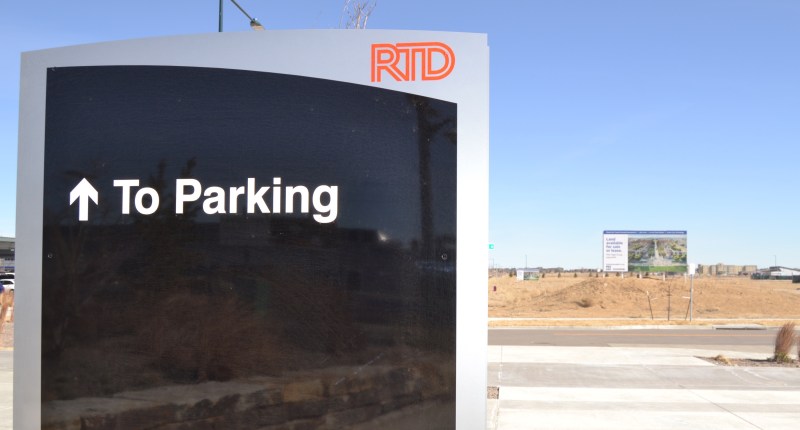There’s Nothing “Smart” About Packing This Much Parking Into Peña Station Neighborhood
So far the main feature of the Peña Station "smart city" is car storage, not walkability.

To have local media tell it, there’s nothing dumb about the “smart city” supposedly coming to the 61st and Peña RTD station out by the airport — autonomous shuttles and WiFi-emitting street lights grab headlines.
One thing the stories about “Peña Station NEXT” don’t cover: The ungodly amount of parking around the station.
According to city documents, Peña Station has 1,585 parking spots either in existence or proposed — and that’s just in the station’s immediate area. Yet the Hancock administration and Panasonic bill the nascent neighborhood as a futuristic and compact place anchored by good transit where people can easily walk and bike everywhere.
The nearly 1,600 stalls are supposedly needed for the station itself, a Panasonic office building, an apartment building (which will have more parking spots than homes), and a hotel with 226 rooms. Panasonic and the apartment developer added more parking spots than city zoning requires.
Part of the problem is that the city requires any parking at all. Parking policy directly affects how people move around a neighborhood: Build more parking, get more cars, and spread destinations further apart from one another. Those things that undercut walkability and transit use. Elected officials and city planners know that, which is why they’re considering parking caps around the 41st and Fox station.

But while the Denver Department of Community Planning and Development created an attractive vision for this station area, adopted by the Denver City Council in 2014, in practice city officials haven’t utilized tools like parking maximums to realize it. The plan aims to “optimize alternative modes of transportation.” Right now Peña Station is on track to optimize single-occupancy vehicles with unfettered storage for them.”
What’s more, Mayor Michael Hancock says Peña Station will anchor affordable housing. Not only are lower income Denverites less likely to own a car, every parking spot in a garage increases development costs by $17,000 on average. That cost is passed on to tenants and home owners.
Peña Station is essentially a blank slate. There’s still time for Hancock and the City Council to use the tools at their disposal to ensure an entire neighborhood by transit is walkable and affordable instead of being overrun with cars.


